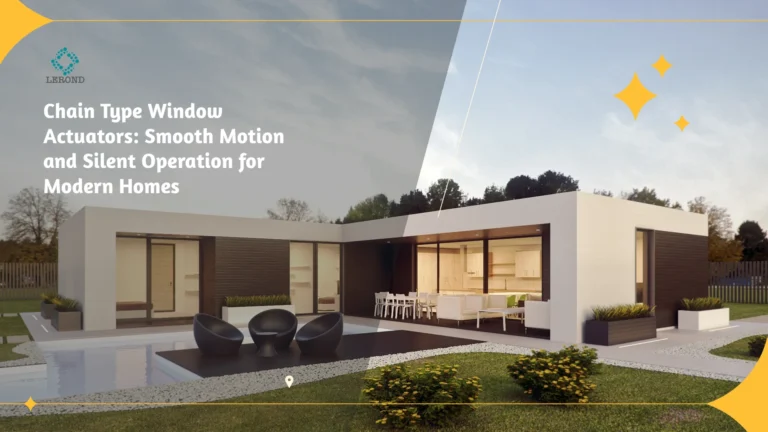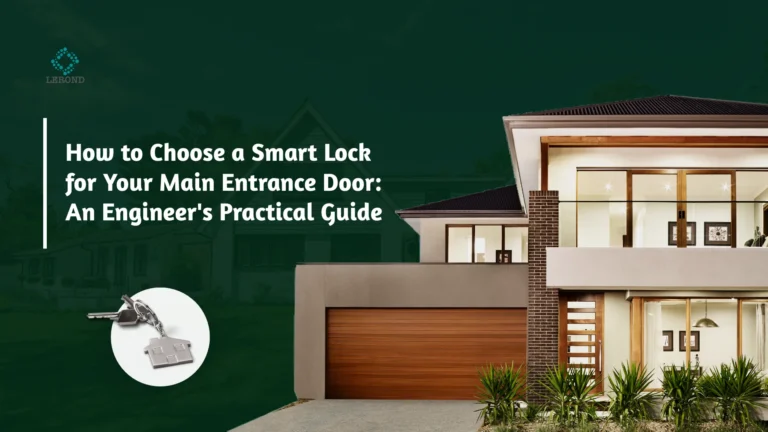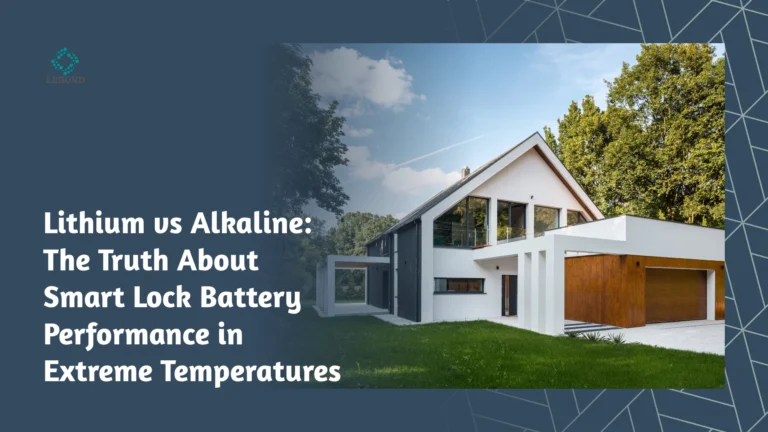As Europe marches toward its carbon-neutral goals under the European Green Deal, building design is undergoing a quiet but powerful transformation. Among the standout innovations, smart window actuators—once considered niche automation tools—are now becoming a standard feature in green-certified buildings across the continent.
This article explores the growing relevance of smart window actuators in European green buildings, examining the drivers behind adoption, technological innovations, regulatory incentives, and how LEROND’s actuator line is uniquely positioned to meet this accelerating demand.
1. Why Ventilation Is at the Center of Green Building Strategy
Indoor air quality (IAQ) is no longer just a comfort metric—it’s a health imperative and a climate strategy. In high-performance buildings, natural and hybrid ventilation is preferred over energy-intensive HVAC systems. This is where automated window actuators play a critical role.
💡 Fact: The European EN 16798-3 standard recommends natural ventilation solutions, especially in schools, hospitals, and office buildings, to reduce energy use.
Smart actuators make it possible to:
- Enable automated night cooling to reduce indoor temperature without air conditioning
- Improve CO₂-based ventilation control, reacting in real-time to occupancy
- Support cross-ventilation in passive house designs
- Integrate with BMS/KNX systems for coordinated air flow control
2. What’s Driving Adoption in Europe
EU Green Building Regulations Policies like EPBD (Energy Performance of Buildings Directive) mandate better indoor air control and energy efficiency.
Smart Building Certification Labels like BREEAM, LEED, and WELL reward adaptive natural ventilation systems.
COVID-19 & Health Awareness Demand for buildings that allow touchless fresh air exchange has soared post-pandemic.
Rising Energy Prices Reducing HVAC dependency through window automation can cut long-term energy costs significantly.
3. Types of Smart Window Actuators in Use
LEROND offers a full suite of intelligent actuator solutions tailored for different window types, facades, and use cases:
Chain Actuators Inward/outward casement windowsPrecision-controlled, IP-rated models
Push Rod Actuators Skylights, high clerestory windowsIdeal for vertical/horizontal force alignment
Rack & Pinion (Sliders) Sliding windows or roof panelsCustomizable stroke lengths and torque control
Scissor Arm/Sloped Windows Greenhouse or atrium applicationsSynchronized opening with rain/wind sensors
All LEROND actuators feature:
- ✅ Quiet, high-torque motors
- ✅ Programmable open/close cycles
- ✅ Tuya-based wireless control or BMS integration (KNX-ready via gateway)
- ✅ Optional sensors for rain, wind, temperature, CO₂, VOCs
4. Integration with Smart & Sustainable Architecture
In modern European buildings, actuators are not just mechanical devices—they are part of a networked control system that responds to:
- 🧠 Environmental sensors: Windows open automatically when CO₂ exceeds thresholds
- 🌙 Nighttime strategies: Open during cooler nights, close at sunrise
- 🏢 Facade-level orchestration: Paired with blinds, HVAC, and lighting for holistic climate management
- 🧍♂️ User override via apps or panels: Allowing both automation and personalization
By integrating seamlessly with building automation systems, actuators help architects meet nearly zero-energy building (nZEB) targets.
5. The LEROND Advantage in Green Building Applications
At LEROND, we understand that durability, adaptability, and compliance matter most in large-scale projects. That’s why our actuator portfolio is engineered for:
- 🔩 Tough Environments – IP65 options for dusty or humid spaces
- 🛠️ Flexible Installation – Surface or concealed mounting
- ⚙️ Precise Control – Adjustable speed and stroke for different facade geometries
- 📡 Smart Protocols – Native Tuya + optional KNX/BACnet gateway support
- 🧪 Tested Longevity – Cycle-tested beyond 30,000 open/close actions
Our team works closely with façade engineers, green building consultants, and system integrators to deliver turnkey actuator solutions that not only automate windows—but also certify buildings for the next generation of sustainable living.
Conclusion: Actuators as Silent Allies in Sustainable Design
Smart window actuators may not be glamorous, but they are instrumental in transforming how European buildings breathe, regulate heat, and respond to the environment. Their ability to combine health, comfort, energy efficiency, and automation aligns perfectly with the future of green construction.
As more projects shift toward passive design, intelligent air quality control, and integrated smart systems, actuator-equipped windows will become less of a luxury—and more of a baseline requirement.
At LEROND, we believe in engineering comfort with intelligence—and smart window automation is central to that mission.




